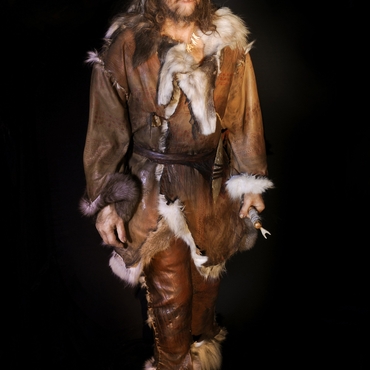
- Home
- Discover the sculptured rock shelters
- Life 15 000 years ago
- What lifestyles?
- Clothing
We have no direct data concerning Palaeolithic clothing, since no organic materials have come down to us from these periods (skins, furs, feathers, etc.). Representations on walls and objects do not provide any information, since humans are depicted naked. Only one engraved figure in the Gabillou Cave appears to be wrapped in a thick hooded coat. At the very most, a single print of a foot clad in a flexible material has been identified on the floor of the Fontanet Cave.
And yet, material found in archaeological layers provides an indirect source of information. Eyed needles were already in use at that time. They were small (25–80 mm), and most often fashioned from bone. Other, larger objects – such as punches and awls – could have been used to drill and assemble thicker parts. These tools show that the Magdalenian wore clothes that were sewn, probably using sinew and plant fibres.
We must therefore imagine that men and women were fully clothed, wearing shoes and probably also headgear in order to survive in harsh climatic conditions. In addition, we must not forget that these people wore personal adornments. Small elements of various types and forms, whose use grew exponentially among the Magdalenians, could have been assembled into necklaces, bracelets and other types of bands, or sewn directly onto clothing. Finally, although this practice is not confirmed, body-painting and tattooing could have been practised.



